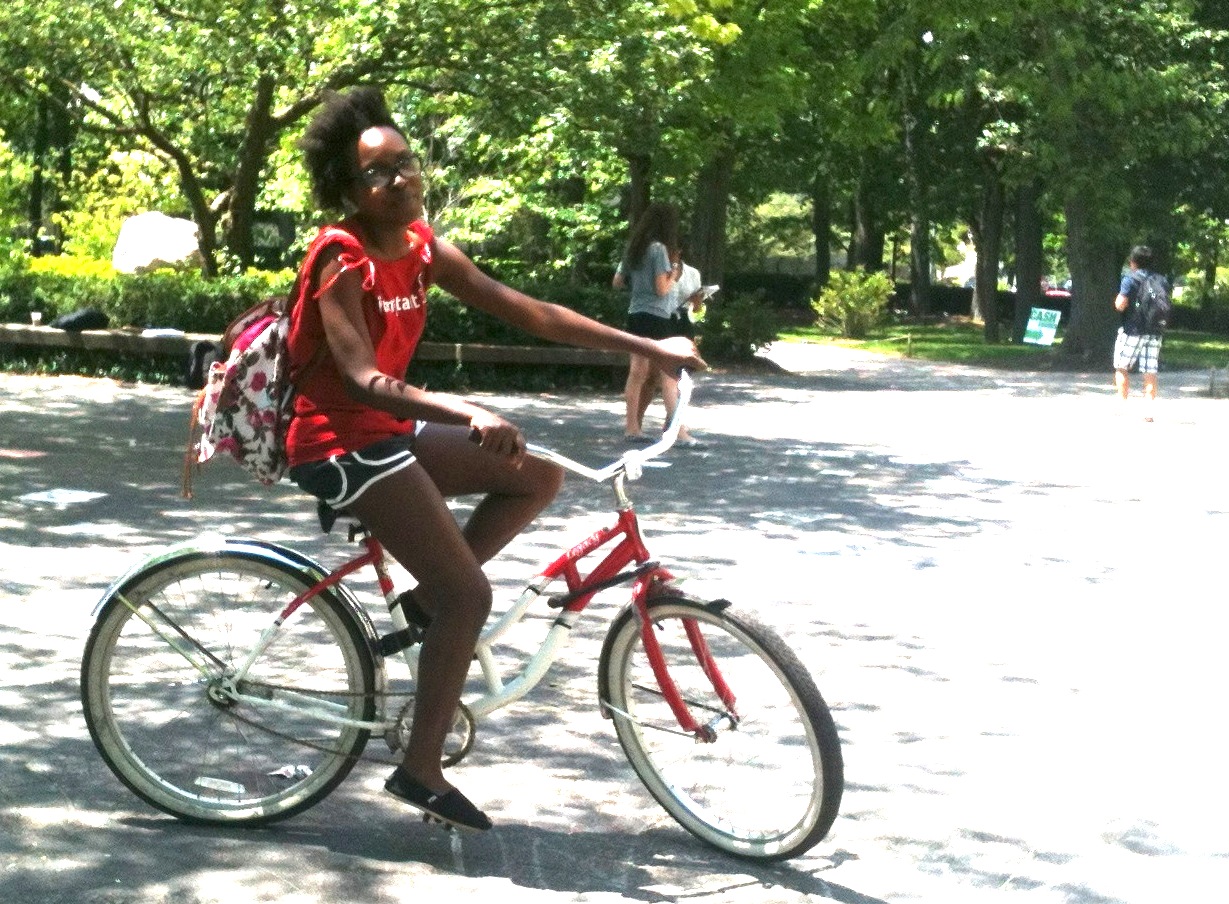Why I Took Up Biking Again as an Adult, and Never Looked Back
by Krislyn Placide | May 25, 2012

Two years ago, during my freshman year in college, I hopped on a bike for the first time since I’d learned to ride at the age of six. It did not go well.
I couldn’t keep up with my friends, who all seemed to be seasoned cyclists. The bike that I’d borrowed from a girl in my dorm was too big for me—a two-wheeled yellow monster that was hard to kick-start and just about impossible to ride. I fumbled and teetered on the bike, and nervously attempted to traverse streets with cars zooming past, wishing I could go home for the duration of the ride.
A few months later, I was effortlessly riding a bike six miles a day, from my dorm to my job and back in time for dinner. It didn’t take any skill or any kind of coaching—all I had needed was a little patience and persistence. Every time I wrapped my fingers around the handlebars, I felt a little more confident in the power of my pedaling. I even got comfortable riding alongside cars on the road; as long as there’s good visibility, I find that drivers tend to be vigilant about cyclists. For nighttime riding, it helps to have lights on the handlebars and bike wheels.
In the two years since I relearned cycling, I haven’t become a master cyclist. I travel at a leisurely pace and arrive at my destination with my heart racing and sweat on my brow. But the bicycle is probably one of the most egalitarian modes of transportation—you get what you put in, and it can cost you next to nothing. I share my bicycle, a red-and-white Schwinn one-speed from Target, with my roommate, so I’ve contributed a grand total of $20 for it.
The League of American Cyclists is the sponsor of National Bike Month, which occurs every May. May 14–18 was Bike-to-Work Week. You might be lamenting that you missed it—but really, there’s no better time to jump on your bike than the present. Even where I live in the Chicago suburbs, where the weather is agreeable only about half the time, June is the perfect time to be outside.
Granted, not everyone lives as close to their workplace as I do. You may not want to ride the 20 miles you drive through rush hour on a bicycle, sweating through your collared shirt. But you can still benefit from using a bicycle. According to the U.S. Department of Transportation, half of all trips taken are less than three miles long. I don’t just use my bicycle for my job, but also for grocery shopping, trips to my college campus, visiting friends, dropping off library books, and trying out new restaurants.
A lot of the time, when I flip up the kickstand, I have no destination in mind. What I want is the stress-relieving feeling of endorphin release. Exercise and leisure, all in one go. But for those who can bike to work, or are willing to try, the benefits are enticing. A 2009 study in the Archives of Internal Medicine found that cyclists who biked to work were fitter, leaner, less likely to be obese, and had better triglyceride levels, blood pressure, and insulin levels than those who didn’t have an active commute to work.
"A lot of the time, when I flip up the kickstand, I have no destination in mind. What I want is the stress-relieving feeling of endorphin release. Exercise and leisure, all in one go."
To top it all off, cycling doesn’t just benefit the cyclists, but also society as a whole. According to the Worldwatch Institute, a four-mile bike trip keeps 15 pounds of pollutants out of the air. Cycling has a positive economic effect as well. Denmark’s capital, Copenhagen, saves $357 million a year in healthcare costs because 80 percent of its population bikes to work even in harsh weather, as reported by the city’s Bicycle Account. Copenhagen isn’t the only place with tough winter riders.
This winter, there were only three or four days when I thought the weather would get the best of me as a cyclist. It takes more than sheer cold to get motivated riders off the streets. A thick jacket, hat, scarf, and gloves quickly solve that problem. And if that doesn’t keep you warm, the body heat generated from physical activity does. If snow is falling in thick bricks and the plows are nowhere to be found, riding the bus and walking remain decent options.
I’ve heard many times the saying that one never forgets how to ride a bicycle—though I’m not sure I believe it. My re-introduction to biking, a little more than two years ago now, tested my patience more than anything. Still, you can always come back. I’m grateful that I did.
Krislyn Placide is a student at Northwestern University and an intern with New Dream.

